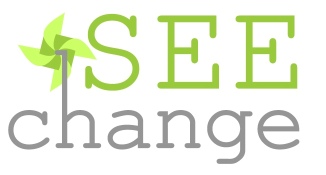It’s easy to tune out when you hear the verb scale. For many in the social sector, that’s what venture-funded startups bent on world domination try to do, sometimes with ethics optional. We need to pay attention, though, because we should be actively seeking impact at scale.
When you consider the complex, interlocking environmental and social problems we face, it’s clear we need an all-sector mobilization equal to the size of the challenges. And nonprofit enterprises are ideally positioned to scale the social innovation that drives lasting change: They don’t have to get big to achieve far-reaching impact; they don’t have to be profitable; and small organizations can have outsized effects if they pick the right scaling strategy.
How a genius idea gets big
When a for-profit entrepreneur scales a big idea, we know it. Success is tied to brand presence: The enterprise touches our lives, or at least our consciousness. And that means ownership of the solution is essential. For social entrepreneurs looking to scale impact, the calculus is different. Scaling impact requires reaching the top of the theory of change pyramid—a condition change in the world. It means not just, say, embedding more sustainable fishing practices into one community, but also creating a model and getting other communities to adopt it so that ocean ecology improves broadly.
There’s no single formula for achieving that kind of success, but based on our work with a portfolio of more than 50 nonprofit projects, Multiplier has identified a set of factors that are essential to scaling from idea to impact:
A widely repeatable innovation designed to close the gap between a current social or environmental condition and the ideal condition. A community center with a unique workforce development program may deliver impressive local benefits but not scale well; a great workforce development program that can be implemented at any community center does.
Seed capital. This might bring to mind challenge grants and big prizes, which are one way philanthropy has tried to create impact at scale. But those strategies introduce market competition in a way that’s not healthy by rewarding organizations that already have resources and are working on scaling an existing idea. Seed capital is most productive when it supports those who need money to bring an entirely new idea into the world.
Full-time, dedicated leadership. Volunteers working on shoestrings typically burn out before they can scale an idea.
Proof of concept. Usually this means a pilot or other hands-on investigative process to determine the idea’s potential for success, followed by modifications to improve the approach or pull out the most effective elements and then an evaluation to determine the best path forward.
An equity lens. Creating scale without equity in mind can exacerbate sustainability issues rather than improve them. To avoid that negative impact, project leaders must address policies, practices and cultural factors that reinforce patterns of inequity, as well as account for underlying advantages and disadvantages affecting particular groups. Questions we ask about any initiative include: Does the policy or program improve, worsen or make no change to existing disparities? Does it have the potential to create systemic changes that address institutional inequity? What intentional benefits or unintended consequences might it produce for the affected communities? Is positive net impact likely?
With the building blocks above in place, social entrepreneurs are well positioned to choose a path for scaling impact. These are the three most common models we see:
- Policy change—generating public policy changes that drive replication, which in turn drives national or international impact.
- Supply chain partnerships—a network model that brings in complementary partners to implement the strategy at scale.
- Field building—teaching and training to lift the field or create awareness of the issue and build support for addressing it.
Pulling the policy lever to drive scale, from the bottom up
Policy change often seems like the obvious path to scaling impact. New or revamped public-sector programs and guidelines—along with the funding that flows from them—can make a widespread embrace of new approaches both feasible and appealing.
Before heading off in this direction, though, it’s important to know: What is the mechanism for gaining broad adoption? How do we generate or expand grassroots support? How do we bring policy to people in a way that encourages replication?
Advocates often focus on lobbying for national policy change based on research insights and program development work, with the idea that the policy then gets pushed down to those who need to carry it out. That sounds reasonable, but people don’t like to be pushed and top-down efforts often fail to gain traction. One environmental project in Multiplier’s portfolio, for example, moved a policy mountain at the federal level, but found that success didn’t lead to community adoption. Now the project team is retrenching to gain buy-in at the local level.
A bottom-up strategy that builds demand for policy change in communities often works better. Proving a concept in multiple locations can open a federal policy window and create incentives that encourage others to replicate the approach.
One example is the federal Promise Neighborhoods program, an effort to support children in distressed communities “from cradle to career.” The program grew out of the Harlem Children’s Zone, a local initiative that proved out, block by block, an approach to ending intergenerational poverty by providing maternal nutrition, preschools, charter schools and wrap-around services for entire families. Seeing the results, other communities began clamoring for similar programs and the initiative caught the first Obama Administration’s attention. HCZ now has its own replication program as well.
An emerging bottom-up example is the Multiplier project Urban Ocean Lab, which seeks to create climate-resilient coastal cities. Its strategy is to develop a policy platform and refine it in collaboration with key city partners who are in a position to drive policy and have the resources to demonstrate adaptations to sea-level rise, coastal ecosystem restoration, effective management of offshore wind and wave energy, and other priorities. Urban Ocean Lab’s theory of change is that cultivating pockets of excellence at the local level and creating a community of practice will spark demand in other cities and catalyze policy change at the federal level.
Spreading innovation through supply chain partners
The supply chain path accelerates impact by distributing program innovation and execution through a network of partners that are already serving the target population. To succeed with this model, social entrepreneurs need risk-friendly funding partners that will support small pilots to demonstrate program potential, along with implementing partners that will commit to fully executing the program—and be willing to give the model away when it’s fully baked.
Large funders themselves have followed this path. When the Annie E. Casey Foundation developed its Center For Working Families model, designed to help low-income individuals and families get on a path to financial stability, it used a supply chain strategy to drive implementation. The Casey Foundation partnered with the community development financial institution LISC, which introduced the program to its network of Financial Opportunity Centers, which then delivered the program in communities across the country.
A more nascent example of the supply chain path from the Multiplier portfolio is Project Equity. The organization encourages retiring business owners to transition their companies to employee ownership and guides them through the process, with the goal of increasing job availability, quality, wages and stability for low- to middle-income workers. Project Equity proved its program’s potential and now is building a network of partners with connections to local small businesses, such as CDFIs, as a way to distribute its approach across the country.
Building a field to create critical mass
When social entrepreneurs truly are entering on the ground floor—there is no community of practitioners around a problem, or even awareness that there is a problem—field building has to be part of any strategy to scale impact. System change won’t happen without the support of a critical mass of organizations and individuals working together as a field: policymakers, researchers, community groups, service-delivery enterprises, advocacy groups and funders.
Field-building strategies follow one of three tracks: creating a new field based on thought leadership and research, as the Rockefeller Foundation did in 2007 and 2008 when it coined the term impact investing and incubated the Global Impact Investing Network; raising awareness to generate support and funding to grow the field; or improving the performance or knowledge of initial stakeholders in the field.
Ocean Sewage Alliance is pursuing the second track. The project leaders see a big problem that no one wants to talk about: poop in the ocean. They believe that by creating awareness among disparate stakeholders—municipal sanitation agencies, industry, NGOs and ocean researchers—and bringing them together, they can “protect oceans by re-potty training the world.” They’ve started by creating a practitioner’s guide that builds the case for action, explains the need for cross-sector collaboration, discusses the policy component, explores emerging technologies and solutions, identifies future needs and provides a crash course on sanitation.
Canopy Collective illustrates the third, capacity-building approach. The project works to build the field of reparative action for Black Americans by connecting U.S. leaders with global leaders who have already realized reparations and repair in their communities. The idea is to expose Americans to models that have worked elsewhere and encourage collaboration, learning and experimentation in the field, with the ultimate aim of depoliticizing and normalizing reparative action.
Focus is important because impact is crucial
Each of these models has its appeal, and social entrepreneurs sometimes try to implement them all at once. This is almost always a bad idea.
To succeed with any model, leaders need to think about product development cycles: prototype, develop, launch, refine. That’s a lot to take on for multiple scaling strategies, and those who try typically find that they aren’t able to put enough energy or resources into any of the strategies to make them work.
Using different impact scaling strategies successively, on the other hand, is often necessary. If we map strategies to the hierarchy of change—first knowledge, then attitude change, skills development, behavior change and, finally, condition change—it’s clear that different stages may call for different scaling models.
It’s important to get this right because the timing is critical. The massive social and environmental problems we face have compounding implications, and the social sector is the only one that is one hundred percent dedicated to solving them. The world needs social enterprises to achieve impact at scale.
Ben Jones is director of strategic partnerships at Multiplier, a nonprofit accelerator supporting over 50 projects working on climate resilience, sustainable food systems, social and environmental equity, and other urgent needs.


